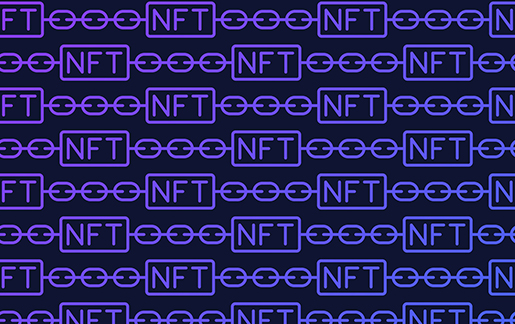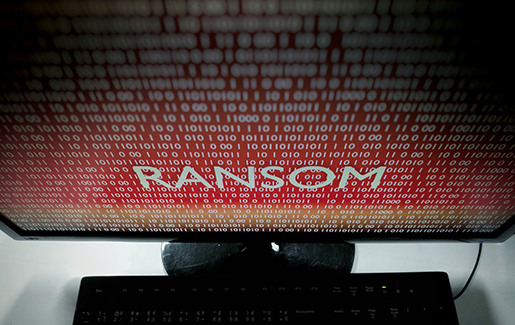
Blockchain technology is starting to get leveraged to solve business problems and serve as the foundational technology for many digital assets and applications—perhaps most notably now in the form of non-fungible tokens (NFTs). But as the technology, and its use cases, start to mature there are still plenty of gaps and loopholes that need to be addressed—both financially and legally. Any tech company using or considering blockchain technology to help companies support NFTs should make sure they’re protected.
For example, let’s say one of a rock band’s biggest fans just purchased NFTs representing 50 unreleased songs from the band through a reputable blockchain marketplace. But there’s a problem. The songs were hacked from a server owned by the band and now you, the owner of the blockchain marketplace, is hit with a $1.5 million contributory copyright infringement lawsuit. In this article, I’ll provide an overview of what is an NFT, who owns the digital asset represented by the NFT, and how do you protect yourself or your customers as an intermediary from such a lawsuit if you process NFTs or run a marketplace that leverages blockchain.
It is important to understand the relationship between an NFT and a blockchain. The NFT is an idiosyncratic cryptographic hash or asset. There is not another one like it. This means the NFT cannot be exchanged for other NFTs, in that regard they are non-fungible. However, there are blockchain marketplaces where you can register, buy, and sell NFTs.
What is an NFT?
Think of an NFT as a digital certificate of ownership. For example, when the rock band registers a musical composition they created with the U.S. Copyright Office, including the musical notes, the certificate represents to the public the band’s ownership of the song. When you purchase an NFT on a particular blockchain, it means you are the sole owner—or should be the sole owner—of that NFT.
Think of a blockchain as a digital ledger—like an Excel spreadsheet. Every transaction is recorded. The difference between Excel and the blockchain is that a change in one part of the blockchain changes the rest of the entries on it—thus making it immutable. Another example: a poem is put on the blockchain and is worked on by several people at once. In this case, any change made by one person would change the way the poem is structured. If someone makes a change to the poem and it doesn’t rhyme, the out-of-sequence change would be obvious. Similarly, each entry on the chain would generally represent an idiosyncratic cryptographic hash, a number like #12n4387901h59. Anyone who conducts business on such a chain typically will use an idiosyncratic hash number like the one above to represent their account. Think of the identifying idiosyncratic hash like an avatar—an electronic image that represents the user’s identity on the blockchain. Some blockchains confirm subscriber identity, but others do not.
There are several benefits to NFTs. At the top of the list, according to many users, are transparency and accounting. For example, Kings of Leon is one of the first major bands to offer its limited edition album “When You See Yourself” as an NFT. Accounting and royalty streams can run smoothly via a blockchain. This brings efficiency to the sometime opaque accounting associated with recording and song royalties.
Who owns the digital asset in the NFT?
The answer is… it depends. Some copyright registrants don’t own the underlying assets for which the copyright is filed with the U.S. Copyright Office. It would be akin to The Beatles seeking to file a copyright over the song, not a particular recording of the song, even though the song is owned by The Rolling Stones. Copyright registration, like the deed to a house, represents ownership of the underlying asset—but sometimes it does not.
Similarly, ownership of an NFT doesn’t necessarily represent ownership of the underlying digital asset, in the example above, the 50 unreleased songs. Instead, the NFT generally presents your ownership of that particular token. To determine who owns the underlying digital asset, a chain of title—like in real property—would need to be established. For copyrighted material, like a song, the trail would need to be linked back to the owner of the copyright in the recording, to whomever an assignment was recorded, and so on. Of course, if the author or owner of the digital asset is selling it, as in the Kings of Leon example, then doesn’t need to be any chain of title analysis done. These transfers of title can efficiently be done on a blockchain via smart contracts.
In the end, the buyer may just own a woefully infringing NFT.
Other rights also may be implicated in the underlying digital asset. For example, the asset may include more than the 50 unreleased songs, such as never-before-seen photos of members of the band. These assets come with their own set of rights, known as “right of publicity,” that are owned by the subjects. In this case, this right would likely be owned by the band members or, in the case of The Beatles, an estate. State law governs the right of publicity. This makes the analysis even trickier if you are seeking to scale the sale of assets that implicate these rights on a blockchain marketplace.
How Do You Protect Against NFT Liability?
If you run a blockchain on which NFTs are exchanged, there are various legal exposure points. In the foregoing example, your company is acting as a marketplace on which copyrighted works are being traded. This implicates direct and contributory copyright infringement. While the former is more straightforward, the latter is trickier. Like in the Napster case, the marketplace can be liable under U.S. Copyright law for the infringing activity taking place on it if you “induce, cause or materially contribute to [the] copyright infringement” while having “knowledge, or reason to know, of” its existence.
Some companies endeavor to protect against such liability via their terms and conditions. For example, a marketplace may include the following disclaimer:
YOU BEAR FULL RESPONSIBILITY FOR VERIFYING THE IDENTITY, LEGITIMACY, AND AUTHENTICITY OF ASSETS YOU PURCHASE ON OPENSEA. NOTWITHSTANDING INDICATORS AND MESSAGES THAT SUGGEST VERIFICATION, OPENSEA MAKES NO CLAIMS ABOUT THE IDENTITY, LEGITIMACY, OR AUTHENTICITY OF ASSETS ON THE PLATFORM.
THE CRYPTO ASSETS LISTED THEREIN ARE PROVIDED ON AN “AS IS” AND “AS AVAILABLE” BASIS WITHOUT WARRANTIES . . . INCLUDING . . . TITLE AND NON-INFRINGEMENT AS TO . . . THE CONTENT CONTAINED THEREIN.
This means that buyer may be purchasing inauthentic or even infringing songs on the site. However, these types of boilerplate terms may not necessarily save a marketplace or blockchain provider from a costly copyright or right of publicity lawsuit in the future. Some cases have held that conscious avoidance -- the “ostrich defense” -- is not a defense to contributory copyright infringement.
There are various ways to protect yourself from such an outcome, including through technology. To the extent digital assets are being exchanged, the smart contracts on the chain can be programmed with anti-fraud technology so that only authentic and vetted products are being sold. This technology works by giving products a unique identity so they can be tracked through the supply chain. This is akin to some of the techniques for verifying age via credit card by services so as to comply with age sensitive laws like the Child Online Privacy Protection Act.
Finally, blockchain is a powerful technology to leverage and presents almost limitless opportunities to help customers—if it’s applied correctly from a legal and technical perspective. If you’ve got the technology covered, don’t forget to consult with a licensed attorney with a working knowledge of blockchain and/or copyright laws to ensure you’re protected there as well.
CompTIA has compiled a list of Legal Resources for Tech SMBs for members that includes an opportunity to request a free master services agreement (MSA) template, a list of CompTIA-reviewed legal services providers, among other tips and advice.
Ryan E. Long is a Santa Monica, Calif.-based tech/media/design attorney and non-residential fellow of Stanford Law School’s Center for Internet and Society.
Learn more about protecting your business from a legal perspective.
Watch CompTIA's Legally Tech YouTube Series Now!

 Add CompTIA to your favorite RSS reader
Add CompTIA to your favorite RSS reader

